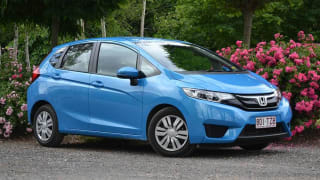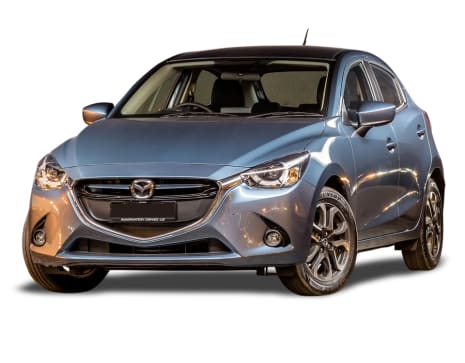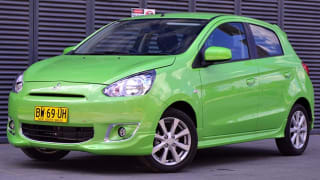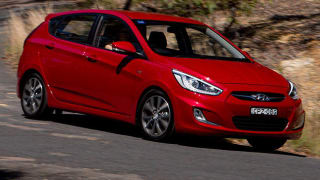In a world where connectivity is king and social media, like a hatchback, can lay bare through the 'rear window' even the most personal information, there are people, usually older, who prefer to hang on to their privacy.
In automotive terms the latter are the sedan folk who like to lock away possessions out of sight in a car boot. Mazda has tipped its cap to them by introducing a sedan version of its popular Mazda2, leaving the hatch to attract the younger, more connected buyer.
While the hatch and sedan share prices - starting at $14,990 for the Neo manual - the sedan misses out on the high-end Genki variant that tops the hatch range.
The Mazda2 Maxx sits in the middle of the range, and the hatch version of that was our recent test car.
Design
There's no disguising the Mazda-ness of the '2', with the front taking on the brand DNA. Designers created a dynamic profile by pushing the compact cabin toward the rear of the lower body's forward sloping lines.
The overall effect of this body design is that of forward momentum, while wheels positioned as close as possible to the four corners of the body create a short overhang and achieve a wide track
The intention is to create a feeling of quality that goes beyond the modest class of the car.
The passenger cabin takes on high ideals with cues taken from small aircraft. The instrument panel spreads like the wings of a plane; the round air-conditioning louvres resemble jet engines; the radiating lines of the door trim convey the image of air flowing from a jet engine.
The intention is to create a feeling of quality that goes beyond the modest class of the car. The driver-centric cockpit environment and classy colour co-ordinated surroundings work well.
Features
Next-generation HMI (Human Machine Interface) with Commander control knob on the centre console, allows easy access to navigation, communications and multimedia, including social media via MZD Connect.
A number of functions can be controlled by voice activation, including switching menus, audio play, stop and skip functions, station selection, as well as zooming in and out of the navigation system maps.
With a mobile music player or smartphone connected to the onboard head unit via USB, voice commands can also be used to search for songs by artist name, or to call phone numbers stored in the phone's contact list.
Engine / Transmission
Of two engines available to the Mazda2, the Maxx takes the uprated 1.5-litre Skyactiv-G four-cylinder producing 81 kW of power and 141 Nm of torque, it's coupled with a six-speed automatic transmission.
The latter allows drivers to press a switch on the shift gate to switch to the Sport drive mode, where the transmission is automatically set to start out in a low gear. It also increases the amount of torque output when the accelerator pedal is pressed down further to deliver increased acceleration and a sense of fast response with a minimum of pedal action.
Safety
Central to this is the delivery of a good field of vision from the driver's seat, plus the placement of new Human Machine Interface devices to minimise movement of the driver's line of sight, as well as the adoption of Mazda's i-Activsense advanced safety technologies.
Available across the Mazda2 range is the Smart City Brake Support option, which, when driving at low speeds (4 to 30 km/h) around town, the system automatically applies the brakes to prevent colliding with the vehicle ahead, or reduce the amount of damage in the event an accident cannot be avoided.
A strong body structure and a full suite of airbags takes care of the passive safety of occupants.
Driving
There's good space in the Mazda2 Maxx cabin, with ample head and shoulder room for the average-size occupants in front, while rear leg room is adequate.
Rear seatbacks fold to increase cargo carrying capacity from 250 litres. And with just one side of the 60:40 division dropped will take a golf bag or similar long load.
Sport mode had the engine holding the revs before gear changes, making lots of noise but not much action in the performance department.
Instruments are clear and easy to read, as is the 7.0-inch screen perched on top of the central dashboard, conveniently at driver's eye level.
Mazda claims 4.9L/100km for fuel consumption on the combined urban / highway cycle. The test car came up with 6.8 litres per 100 kilometres on the daily city commute and an efficient 4.1 litres per 100 kilometres on motorway runs.
The ride was a bit bumpy and noisy on some uneven road surfaces. The car handled confidently without suspension trauma. Parking, with the aid of the reversing camera and its guidelines, was a doddle with such a small car.
Sport mode had the engine holding the revs before gear changes, making lots of noise but not much action in the performance department. Stick to saving fuel in Normal mode is my advice















